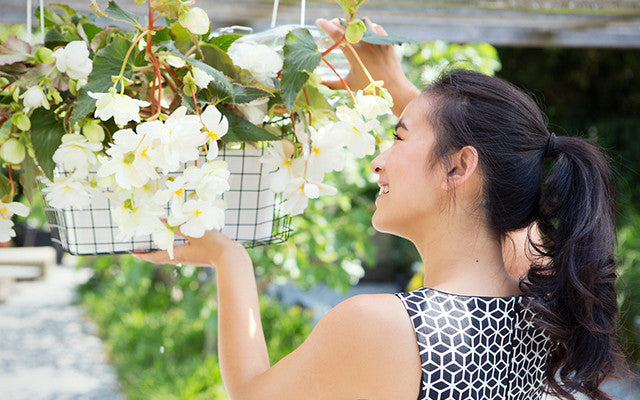
Begonias! All About Begonia Bulbs
According to the Scottish Begonia Society, there is evidence that begonias already existed several thousand years ago when the Ancient civilisations in equatorial Africa and tropical regions of Asia were thriving on planet Earth. In Africa, primitive people used the begonia plants as a food source.

Other references to the existence of begonias as long as two thousand years ago suggesting that they were found among the Incas in the Peruvian mountains, tropical places in Central and South America, and as far away as the Indian Ocean and Java in Indonesia. Long before these beautiful flowering gems were known as begonias, these plants were thriving in tropical jungles and rainforests.
History of Begonias
Until 1557, a Mexican species of a begonia-like plant was known as B. gracillis. Franz Hernandez referred to the plant as Totoncaxo coyollin. The earliest reference to the plant that is now known as the Begonia probably occurred in 1649 when a Mexican monk by the name of Franz Hernandez described the unnamed flower that he had seen in drawings. He described flowers that were bell-shaped blooms that grew downward, so the flowers appeared to be drooping. The roots of this plant grew from a tuber below the soil.

In 1689, King Louis XIV ordered the superintendent of ships, Michael Bégon (1638-1670) to assemble a team of scientists to go on a botanical expedition to the West Indies. Bégon designated Joseph Donat Surian, a physician from Marseilles as the team’s leader. Surian needed to find someone to help him with the research on the trip. Charles Plumier became that person, and he did drawings of the plants that Surian collected.
In 1690, Charles Plumier (1646-1706) became the first person to describe begonias, a type of flowering plant he named in honour of Michael Bégon.

That was the first time that one botanist named a plant in honour of another, and it set an example for what was to become a tradition whereby newly discovered plants would be named after botanists. The name became official in 1753 when Linnaeus recorded the name of the plant in his famous encyclopaedia entitled Species Plantarum.
Throughout the mid-17th century, men who travelled would bring plants, leaves, and pressed flowers back to Europe. In 1777, William Brown sent the first Begonia plant, Begonia minor to Kew Gardens. The arrival of B. minor at Kew Gardens represented the first time Western horticulturalists were introduced to begonias. By the early 1800s, botanists began experimenting with hybridisation to create new tuberous Begonia cultivars.
History and Origin of Tuberous Begonias or Begonia Bulbs
Tuberous begonias were initially found on the high slopes of the Andes Mountains where they were surrounded by trees. This native habitat provided the ideal growing conditions that these Begonia plants need. Temperatures are cooler at higher elevations, and there was plenty of moisture and shade in rainforests. These unique Begonia bulbs first came to Europe in the 19th century. They had small flowers that measured no more than 25 cm or one-inch in diameter. These cultivars were single-flowered specimens.

The earliest hybridisation efforts with tuberous or bulb begonias took place at Veitch nurseries, under the guidance of John Seden. In 1870, the first tuberous hybrid from Seden’s programme was introduced. It was called Begonia ‘sedenii’, and large, magenta-coloured flowers characterised it. The success of Seden’s initial hybridisation effort inspired botanists throughout Europe to develop more tuberous hybrids.Veitch nurseries, under the guidance of John Seden.
Four years later, botanists successfully crossed B. ‘Sedenii,’ and B. dregei, a South African species that had white flowers. The resulting hybrid was called ‘White Queen.’ It became the first pure white example of a tuberous Begonia hybrid.
In 1886, British plant hunter, Richard Pearce introduced B. veitchii, a species he found around Cuzco in the Andes Mountains of Peru, not far from the yet-to-be-discovered world wonder, Machu Picchu.
During this same period, French Begonia breeder, Victor Lemoine succeeded in creating a double-flowering tuberous Begonia hybrid that he called “Gloire de Nancy.” His notable accomplishment was the result of crossing three tuberous species: B. ‘Sedenii,’ B. Veitchii, and B. pearci.

From that point on, rapid development in tuberous Begonia hybridisation efforts prompted botanists to divide the large group of B. x tuberhybridia hybrid begonias into 17 subgroups. They used distinctive plant characteristics as their method for categorising the new hybrid begonias. Subgroups included small and large double begonias, pendulous begonias, which included cascade begonias and hanging begonias, multiflora and fragrant begonias, Fimbriata begonias, and Picotee begonias.
It was initially thought that because of their origin, tuberous Begonias or Begonia bulbs were tropical plants. But the species that came from areas of the Andes mountains turned out to be more cold tolerant because of the climate at higher elevations in the hills.
Characteristics of Different Types of Tuberous Begonias

- Double begonias are characterised by large, colourful flowers whose petals unfold into a rose-like formation. Fully open flowers measure 15 cm or 6-inches in diameter. They grow to a height of 30 - 40 cm or 12- to- 16-inches tall. Double begonias are a excellent choice for containers on porches, patio, or terraces.

- Samba Begonias take their name from a Brazilian dance of the same name. These Begonia hybrids have large double ruffled flowers in colours that resemble the colours of tropical fruits. Samba begonias are ideally suited to planting in window boxes or patio containers or pots. They grow to an average height of 30 - 40 cm or 12- to 16-inches tall. In full bloom, flowers can reach a diameter of 15 cm or 6-inches. A unique characteristic of Samba begonias are their carnation-like appearance, and they are beneficial for attracting pollinators like bees and butterflies.

- Pendula or Hanging Begonias are characterised by the downward manner of their growth habit. Instead of growing up towards the sun, this type of Begonia has flowers that flow over the sides of containers, making them ideal for hanging baskets where they can be hung from tree branches or suspended from a pergola. Covered areas provide the filtered light and protection from the hot summer sun that begonias need. The flowers that emerge from pendula begonias are unlike the flowers of any other type of Begonia. Bunches of small blooms grow off of short, thin stems that are attached to the main plant stems. When the small flowers form clusters, they create the illusion of larger flowers. The maximum height that pendula begonias reach is 40 cm or 15-inches.

- Cascade Begonias get their name from the way they grow downward rather than upright. Cascade begonias should be placed in a location where the flowers can flow over edges of the container. These begonias reach a maximum height of 30- to 40- cm or 12- to 16-inches. Cascading begonias produce small double flowers that have frilly petals. During the summer when plants are blooming prolifically, the foliage is barely visible. Cascade begonias are useful for attracting pollinators like bees and butterflies.

-
Picotee Begonias produce flowers that are characterised by the perfect combination of symmetrical frilly petals, and the darker edges of every petal that create a dramatic impact. Picotee begonias attract pollinators as they put on a dramatic display of colour in a uniquely shaped flower and flower colour. Don’t let other begonias upstage this beauty and plant it alone where it can be the star of the show.
- Sangria Begonias get their name from the traditional Spanish summer drink here fresh seasonal fruits are added to wine to produce a refreshing beverage. Sangria begonias produce double flowers whose petal colours change as the flowers open, revealing a festive display of multicoloured blooms. Sangria begonias grow to a height of 30 - 40cm or 12- to- 16-inches.

- Rosebud Begonias are characterised by their unusual bi-coloured petals. The centre part of each flower is darker, and the surrounding petals are lighter except along the edges. They bear some resemblance to some hybrid garden roses. Rosebud begonias grow to a height of 12- to 16-inches or 30 - 40cm tall. These striking flowers make a excellent addition to a garden bed in a partly shady location. Like many other Begonia varieties, Rosebud attracts beneficial pollinators.
- Begonia Odorata or Fragrant Begonias are the only Begonia variety that has a discernible fragrance. Fragrant begonias don’t sacrifice the delightful smell for their beautiful look. Odorata begonias are ideal for patio pots and containers. Place them around any outdoor sitting area where the scent beckons people to stop and smell them. Fragrant begonias are also attractive to pollinators.

- Fimbriata Begonias are unusual begonias that are characterised by large flowers that consist of multiple layers of frilly petals that make these plants look like gigantic carnations that have frilled edges. Fimbriata begonias grow to a height of 12- to 16-inches or 30 - 40cm. These striking flowers are a excellent choice for the edges or borders of garden beds. They are also effective in large containers. Pinching or cutting the wilted or spent flowers away is the most effective way to get plants to produce more flowers and extend the bloom time.
Planting, Care and Cultural Requirements
- Climate Considerations
It is important to recognise that Begonia Bulbs are not frost tolerant. The climate in the United Kingdom is unusual for a place that is located at a latitude as far north as it is. Despite the mild winter temperatures, it's imperative that anyone who wants to grow begonia bulbs consider average daily high and low temperatures when preparing to plant tubers in the spring or overwinter them in dormancy.

According to the Royal Horticultural Society’s plant hardiness ratings that were established in 2013, tuberous begonias have an H2 rating, which means that they cannot survive in temperatures that are colder than 1 to 5 degrees Centigrade, or 34 to 41 degrees Fahrenheit. They are considered tender perennials that can be suitably overwintered in a cool, frost-free glasshouse or greenhouse.
- Planting Begonia Bulbs
According to the Royal Horticultural Society, tuberous begonias are ideally suited to growth in containers. Start tubers in March or April when temperatures are 18 degrees Centigrade or 64 degrees Fahrenheit. The simplest way to get started is by using seed starting trays. Fill the trays with a 3-inch or 7.5 cm layer of well mixed and moistened compost for potted plants. Allow a minimum of ¾-inch or 2 cm between each tuber. Plant each tuber with the hollow side facing upward, laying them an inch or 2.5 cm below the surface of the compost. Check on the tubers often to see if they need to be watered.

As soon as the first leaves emerge, it’s time to transplant each tuber into its own pot. For this phase of growing, use 4 - 5-inch or 10 to 12.5 cm size pots. Prepare a multipurpose compost or peat-free planting medium in a large bucket. Add water slowly, mixing the water into the growing mixture so that it gets evenly moist.
If you planted tubers indoors and haven’t had your containers outside yet, you will want to give the pots some time to acclimatise to outdoor air before leaving them outdoors for the remainder of the growing season. Do not take them outside until there is no longer a threat of frost.

Allow the plants to grow outside in pots in the desired location for four to six weeks. During this time, the only care they need is regular watering. Once the plants are well established, it is time to start a weekly fertiliser regime. The best fertilisers to use on tuberous begonias are those that have a high concentration of potassium. Products that are labelled for tomatoes have the ideal ratio of nitrogen, phosphorus and potassium. The weekly fertiliser protocol should continue until September. By that time, the growing cycle is nearing its end. The leaves will start to turn yellow before they fall off entirely. During this time, the tubers are preparing themselves for winter dormancy. Gradually reduce the frequency of watering.
- Preparing Tuberous Begonias for Dormancy and Overwintering
Tuberous begonias are considered tender perennials, which means they can’t tolerate freezing temperatures. Tubers will spend the winter resting and storing food to use when growth starts again the following spring.

Remove tubers from their pots just before the first frost. Carefully remove the excess dirt and place the bulbs in a clean location to dry out before storing them. Once they are fully dry, they can be stored in clean sand in a cool, dark shed where the minimum temperature doesn’t dip below 7 degrees Centigrade or 45 degrees Fahrenheit. Mist the tubers with a plant sprayer from time to time to keep the tubers from shriveling up and drying out.
- Propagating Tuberous Begonias from Stem Cuttings and Dividing Tubers
To propagate begonia bulbs from a plant tuber, the tuber needs to grow for as long as it takes it to produce several shoots, each of which has at least one bud. Cut the t uber into pieces so that each slice has a shoot and at least one bud, and some well-developed roots. Allow the sliced tuber pieces to dry out before planting them.

Plant each tuber slice in its own pot, making sure that the roots and tuber are covered with compost, and the buds and shoots are visible. The existing roots continue to grow, but the parts of the cut tuber that don’t have roots won’t grow.
Stem cuttings should come from well-established plants. Remove a 10 cm or 4-inch portion of the stem, making sure that it it attached to a portion of the tuber. Place the cutting in a pot filled with moistened rooting compost mixed with sand. Keep the pot on a heated seed starting mat until the cutting develops roots and the stem starts to get leaves.
When spent flowers aren’t pinched, some tuberous begonias may produce seeds. Seeds that come from a tuberous begonia won’t produce plants that are identical to the parent plant.

The British National Begonia Society stresses that water is the single-most important care factor in the successful growing of tuberous begonias. Without water, the bulbs will shrivel up and wither away. With too much water, tubers may start to mold or rot. When watering begonia bulbs, whether they are growing in hanging baskets, patio pots, window boxes or garden tubs, avoid splashing or spraying the leaves with water. Saturated leaves are more susceptible to the development of plant diseases. Wet leaves are also attractive to predatory insects and other pests.
 |
Susan Klatz Beal |






















































































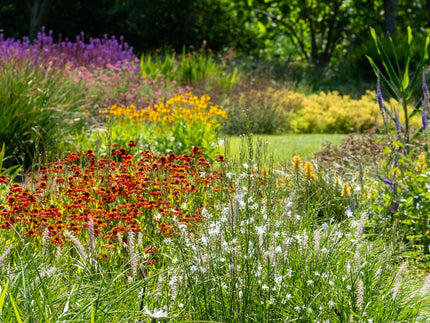
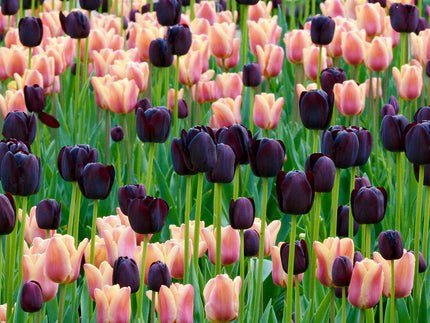
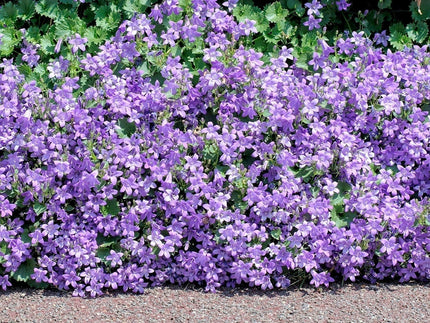
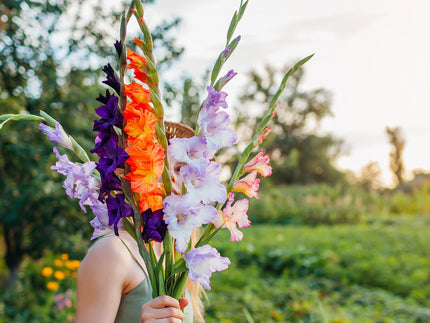
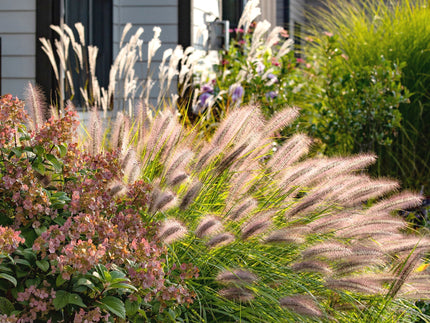
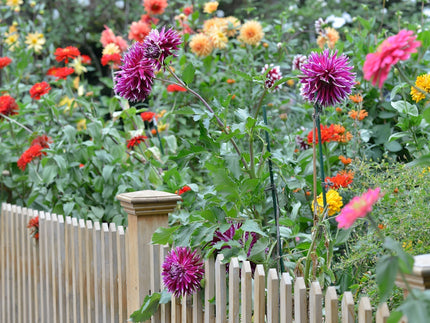
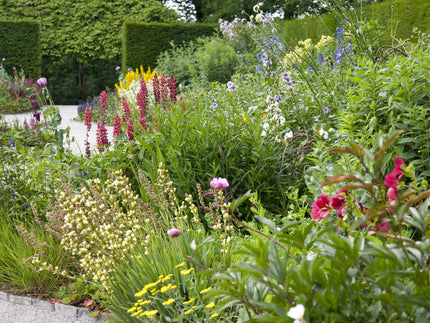
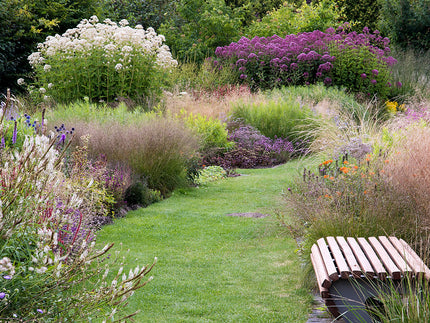
5 comments
How many tubers should you put in a pot
How many in a hanging basket
Thank you
Hi do the begonia bulbs flower every year once planted ?
Hi there, I’d like to order some of these please. My dearest Mum used to have corms that got bigger every year, probably 8 inches across in the end. When she passed so did the corms!
Is there any way you could hold what I order until mid May please as we are away?
Thank you,
Anne Heyes
Dear Bill,
You can lay the plants in a warm, dry place. After a couple weeks, the stems and foliage should easily pull away from the tuber. If not, let the tuber and stems dry a bit longer. Once the tuber is dry the stem/stems should detach easily.
All the best,
Farmer Gracy
When the flowering has stopped and are preparing to overwinter corms should I twist the flowering stems off the tuber or wait until the stem falls of naturally?
This is one of the best and most informative articles on begonias.